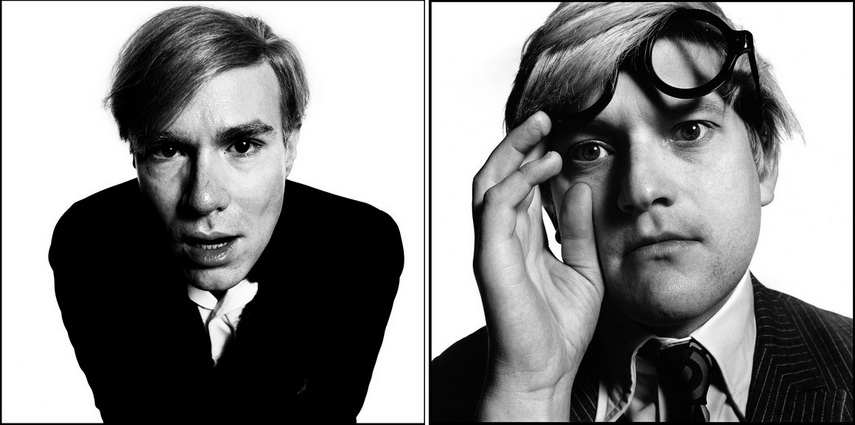The Energy of the 1960s in David Bailey's Photography
One of the most important English photographers and the person responsible for the inauguration of the 1960s aesthetic, David Bailey was at the top of cultural climate which marked a definite shift in the British society, still saturated with conservatism to a certain extent. To be more precise, this period known as The Swinging 1960s brought the intersection of popular and high culture, and the work of David Bailey perfectly encapsulates the new social and cultural paradigm.
The upcoming exhibition at the Gagosian in London tends to underline once again the impact Bailey’s iconic works made on further generations of photographers. A selection of portraits of visual artists, musicians, and actors will show how well the photographer captured the zeitgeist of the 1960s London, at the time the epicenter of culture and liberated lifestyles.

David Bailey - The Master Of The Lens
Although David Bailey was self-taught, he managed to construct distinct and recognizable photographic oeuvre characterized by white backgrounds, bold crops, and unconventional poses. The crucial turning point in his career was when he started working as the assistant to the famous photographer John French in 1959, which led him to become a fashion photographer for the British edition of Vogue magazine.
Together with his peers Brian Duffy and Terence Donovan, Bailey captured the Swinging London phenomenon of 1960: a culture of fashion and celebrity chic. The three photographers were hanging out with musicians, actors, and even royalty, so they easily gained the status of celebrity themselves.
The atmosphere of the swinging frenzy is best expressed in his box of poster-prints of 1960s celebrities called Box of Pin-Ups, featuring figures such as Jean Shrimpton, Mick Jagger, Terence Stamp, The Beatles, Cecil Beaton, Andy Warhol, and the Kray twins, notorious East End gangsters. It was a unique and commercial release that showed the photographer's new vision.

The Fashion Mage, Music Fan, and The Film Maker
In the late 1950s, Bailey started working for a famous fashion brand Jaeger shortly after Jean Muir became the brand's leading designer. His first shoot in New York City was of young model Jean Shrimpton, who wore a combination of Jaeger and Susan Small clothes. The shoot was titled Young Idea Goes West. In 1960, Bailey started working for Vogue, and their collaboration went so well that within just a few months he was shooting covers, and at the peak of his productivity, the photographer made eight hundred pages of Vogue editorial in a single year.
In 1970, Island Records hired Bailey to shoot Cat Stevens for his upcoming album "Tea for the Tillerman". The musician was not very fond of the idea of his photo on the cover of the album; however, he allowed Bailey's photographs to appear on the inner sleeve of the album. The famous rock musician Alice Cooper was famously photographed almost nude by Bailey for Vogue magazine in 1972. The photographer also made the cover image of the group's top-selling album Billion Dollar Babies, showing a baby wearing shocking eye makeup. In 1985, Bailey took photos of the Live Aid concert at Wembley Stadium; he also photographed cover art for musicians including The Rolling Stones and Marianne Faithfull.
Alongside his photographic career, David Bailey also produced few television commercials and documentaries. TV documentaries titled Beaton, Warhol, and Visconti were directed by the photographer from 1968 to 1971. In 1992, he also directed the BBC drama Who Dealt?, in 1995 he wrote and directed the film The Lady is a Tramp, and three years later he directed a documentary Models Close Up, which was commissioned by Channel 4 Television.

David Bailey Photography at Gagosian
David Bailey photography is iconic to the point that it became an integral part of British culture and the fashion industry; his outstanding portraits and fashion imagery nurtured a radical sense of freedom and sexuality. David Bailey once stated:
The pictures I take are simple and direct and about the person, I’m photographing and not about me. I spend more time talking to the person than I do taking pictures.
The BBC even made a film of the famous 1962 New York photo-shoot with Jean Shrimpton titled We'll Take Manhattan in 2012.
The exhibition at Gagosian which features Bailey’s most fruitful period of the 1960s encompasses some of the best-known images of celebrity figures such as Michael Caine, Jane Birkin, David Hockney, Jean Shrimpton, and Andy Warhol. The famous photographer portrayed characters not only as stiff mannequins but as dignified and authentic individuals.
David Bailey: The Sixties will be on display at the Gagosian gallery in London from 14 February until 30 March 2019.
Editors’ Tip: Disavowals: or Cancelled Confessions
One of the first celebrity photographers, David Bailey socialized with many of the cultural icons of the 60s - he lived with Mick Jagger, married the legendary French film actress Catherine Deneuve and had relationships with the models Jean Shrimpton and Penelope Tree. Along with Brian Duffy and Terence Donovan, he was one of the 'Terrible Trio' - self-taught East End boys who rebelled against the precious style of fashion portraiture as practiced by society photographers like Cecil Beaton and Norman Parkinson. His own fame was confirmed when director Michelangelo Antonioni used him as inspiration for the character of fast-living photographer Thomas Hemmings in the cult film "Blow-Up" (1966).
Featured images: David Bailey - The Kray Brothers, 1965. Platinum Palladium, 28 x 28 inches. Edition 7 of 10. Catherine Deneuve Contact Sheet, 1966. Digital pigment print of Ilford Galerie, 44.3 x 38.4 inches. Edition 1 of 10. © David Bailey. Courtesy Gagosian gallery
Can We Help?
Have a question or a technical issue? Want to learn more about our services to art dealers? Let us know and you'll hear from us within the next 24 hours.

